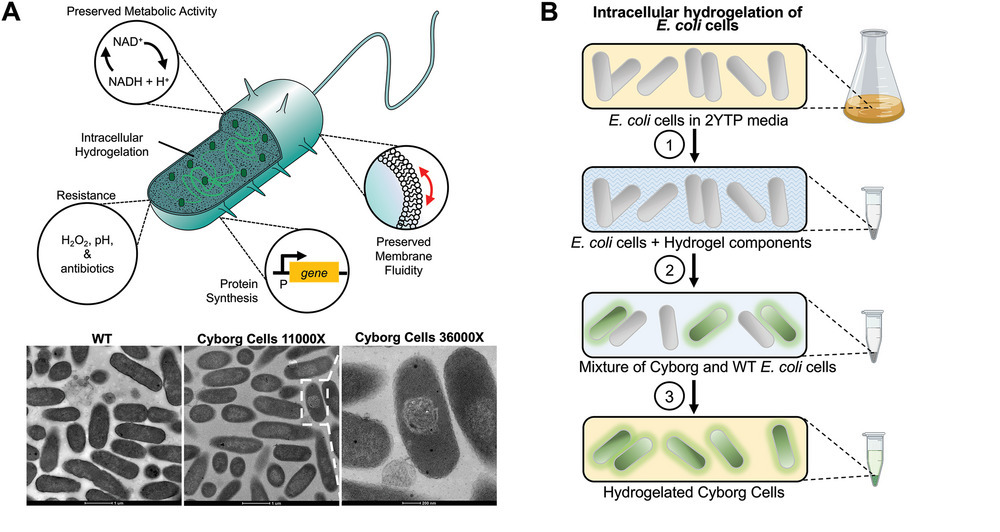Bioengineers from the University of California at Davis have turned bacteria into semi-living “cyborg cells.” They
In a paper published in Advanced Science,researchers describe a new approach to synthetic biology. They filled living bacterial cells with basic units of an artificial polymer. Once placed inside the cell, the polymer is packaged into a hydrogel matrix using ultraviolet light. The modified cells retained almost all functions, but could not reproduce.
 Device (left) and production (right) of cyborg cells. Image: Luis E. Contreras-Llano et al., Advanced Science
Device (left) and production (right) of cyborg cells. Image: Luis E. Contreras-Llano et al., Advanced Science
Traditionally, to create cells with the desiredfunctions, scientists use either a living bacterial cell with edited DNA, or an artificial cell with a synthetic membrane and biomolecules. Each of them has its drawbacks: a living cell is more flexible, but at the same time it is able to multiply and mutate, while an artificial one is too primitive and solves a small range of problems.
Researchers have found that cyborg cellsmore resistant to stressors that would kill normal cells. For example, they have shown resistance to hydrogen peroxide, antibiotics, or high pH. In an experiment, biologists created cyborg bacteria that could get inside cancer cells.
Researchers will continue to analyze variousmaterials for biosynthetic cells. They hope that the finished cyborg bacteria will find a wide range of applications, from environmental problems to the diagnosis and treatment of diseases.
Read more:
A giant sunspot is turning towards the Earth. It is visible to the naked eye
See how a bladeless plane flies. Its speed exceeds 900 km/h
The Milky Way is abnormally large for its galactic filament